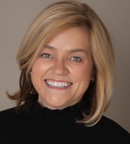At this year’s ASCRS annual meeting, the Outpatient Ophthalmic Surgery Society (OOSS) hosted its signature Perspective Luncheon, assembling a multidisciplinary panel to tackle a pivotal question in ophthalmic ambulatory surgery center (ASC) development: “Update, Renovate, or Build New?”
With perspectives from surgery, architecture, finance, and real estate, the discussion offered a roadmap for ASC leaders navigating expansion, succession, and long-term sustainability.
Why Reassess Your ASC Strategy?
Kris Pugh, MD, an ophthalmic surgeon currently planning a new ASC in Jeffersonville, Indiana, framed ASC development as both a clinical necessity and a strategic opportunity. With rising surgical demand and limited ophthalmologist supply, physician ownership offers revenue diversification, greater cultural control, and a powerful recruitment and succession tool—particularly attractive to entrepreneurial younger surgeons.
The Case for Early, Informed Planning
Architects John Marasco (Marasco & Associates) and Jared VanDerWeele (Eckert Wordell) emphasized that early planning around volume, technology integration, and adaptability is essential. Feasibility studies, long-term volume projections, and understanding regulatory environments—especially in Certificate of Need (CON) states—must guide site selection and facility design. Flexibility for future upgrades, not just immediate needs, is crucial.
Real Estate and Financial Strategy Must Align
Financial experts James Winchester (CMAC Partners) and Collin Hart (ERE Healthcare Real Estate) argued for early and integrated financial modeling. They warned against assuming younger physicians will accept legacy investment structures. Mr. Winchester noted a growing reluctance among new partners to buy into high-equity facilities without having shared early risk. Both panelists recommended aligning ASC and real estate ownership to ensure financial consistency and equitable succession.
Key strategies included:
- Engaging lenders and financial advisors before major investments.
- Exploring joint ventures when borrowing capacity is limited.
- Structuring real estate ownership as a retention and succession tool.
Renovate, Update, or Build? Choose Strategically
The panel distinguished among three paths:
- Update: Cosmetic improvements to modernize the patient experience.
- Renovate: Structural changes to accommodate new technology or higher volume.
- Build new: A long-term investment aligned with growth, culture, and operational control.
Each option carries distinct implications for compliance, operational readiness, and value creation. Mr. VanDerWeele stressed post-construction realities such as Medicare certification, accreditation by AAAHC or another agency, and fine-tuning of systems—all of which must be built into timelines and budgets.
Ownership, Succession, and Legacy
Albert Castillo, OOSS Director of Membership and CEO of San Antonio Eye, underscored the importance of intentional ownership structures. He advocated for real estate buy-in as a precondition for practice ownership, creating alignment and long-term commitment. The result? A 100% retention rate among physician-partners with real estate stakes.
Dr. Pugh echoed this theme, cautioning that short-term EBITDA goals must be balanced with long-term sustainability and legacy. When senior physicians seek to exit, mechanisms such as sale-leasebacks or restructured equity buy-ins can help bridge generational gaps.
Final Takeaway
Across disciplines, the panel delivered a unified message: early strategic planning, financial alignment, and future-ready design are essential for ASC success. Ownership structures must be designed with intent—not left to legacy—to ensure sustainable operations, retain talent, and protect long-term value.
Looking Ahead
For ASC leaders and stakeholders, this conversation underscored a central message: strategic planning, expert guidance, and long-term vision are essential to sustainable ASC growth and performance.
For continued insights, OOSS will host a series of follow-up webinars throughout the year. The full luncheon program is available at ooss.org/ondemand. OASC









